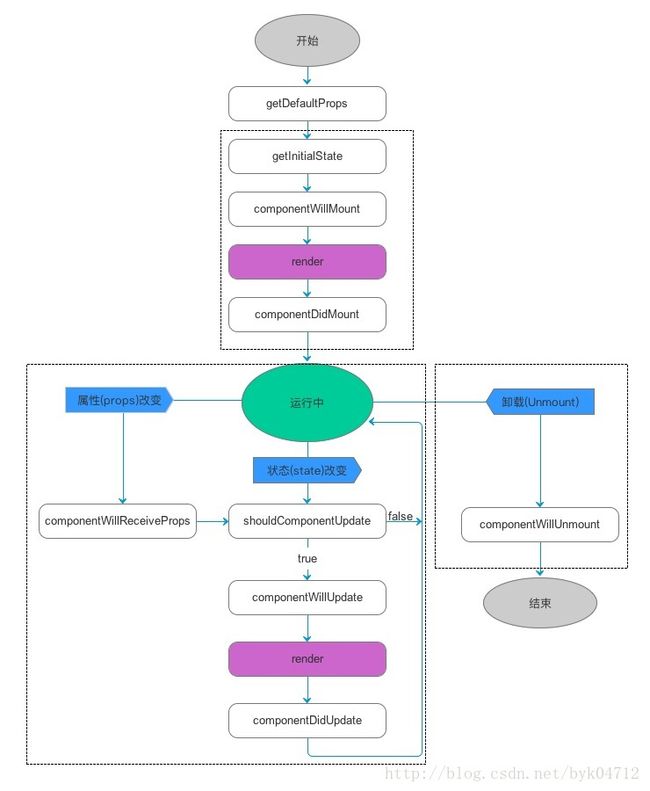- ReactJS与Node.js:前后端整合之道
背景简介在当前的Web开发领域中,ReactJS作为前端框架的佼佼者,其组件化和声明式的编程方式广受开发者喜爱。而Node.js作为后端技术的热门选择,也因其实时、非阻塞I/O的特性而大放异彩。当ReactJS与Node.js结合时,我们可以构建出全栈的应用程序,实现从前端到后端的无缝对接。本文将从ReactJS与FacebookAPI的集成讲起,逐步过渡到使用Node.js来构建React应用的
- 【可信数据空间】
flyair_China
安全
分阶段设计可信数据空间(TrustedDataSpace,TDS)方案,覆盖数据处理、存储、加密及AI工作流全生命周期。一、预备阶段(Preliminary)目标:定义数据空间治理框架组织对齐设立TDS治理委员会(含安全官、数据科学家、合规专家),制定《可信数据共享宪章》:数据主权原则:所有权、使用权、存储权分离(GDPR/CCPA合规)最小授权机制:基于用途的访问控制(Purpose-based
- 23种设计模式--#2单例模式
一、简介1.什么是单例模式单例模式是设计模式中创建型模式的一种,它的核心思想是保证一个类在整个应用程序的生命周期中,只存在一个实例对象,并且这个实例对象能够被系统中的其他组件统一访问。就像现实生活中一个国家只有一个首都,一个公司只有一个CEO一样,在软件系统中,某些类的对象也只需要存在一个,以避免重复创建对象造成的资源浪费,或是多个实例同时存在导致的状态不一致等问题。单例模式看似简单,却是实际开发
- Servlet 对象的生命周期
Servlet对象的生命周期Servlet的生命周期由Web容器(如Tomcat)管理,分为以下三个阶段:️1.初始化阶段(init())触发时机:当容器第一次收到针对该Servlet的请求时,或容器启动时(若配置了)。执行方法:调用init(ServletConfigconfig)方法。特点:仅执行一次,用于加载资源(如数据库连接、配置文件)。ServletConfig对象提供初始化参数(在we
- 随笔:2021-11-21
磐孚菩提树下
回想自己加入的变现学院有一年了,从中自己多多少少也学到了许多的知识,但是也有自己不足的地方。没有做好自己的社群营销裂变,没有组建好自己的团队,也没有自己的社群组织。从中得到了:几个关系不错的朋友,学到了做社群的思路,也扩大了自己的知识的边界。计划从今天开始,把这个社群组织重新拾起来,继续开始自己的学习。
- nextjs学习笔记
ainuo5213
web前端框架学习nextreactreact服务端渲染next入门
由于本人最近在学习jocky老师的React16.8+Next.js+Koa2开发Github全栈项目关于react的服务端重构项目,然后跟着老师的视频做笔记,记录下自己的所学知识。目录结构pages(必需):pages目录是nextjs中最终要的一个目录,这个目录的每一个文件都会对应到每一个页面,可以根据地址栏的路由进行跳转。若pages下的js文件在一个目录下,那么nextjs默认会将这个
- next.js刷新页面时二级菜单展开状态判断
啃火龙果的兔子
开发DEMOjavascript前端react.js
在Next.js中保持二级菜单刷新后展开状态的解决方案在Next.js应用中,当页面刷新时保持二级菜单的展开状态,可以通过以下几种方法实现:方法1:使用URL参数保存状态(推荐)import{useRouter}from'next/router';import{useEffect,useState}from'react';constMenuComponent=()=>{constrouter=us
- 用项目说话:我的React博客构建成果与经验复盘
Pan Zonghui
移动端react项目总结react.js前端前端框架
这是一个基于React19+TypeScript+Vite构建的现代化博客系统,采用了最新的前端技术栈和工程化实践。项目不仅实现了完整的博客功能,更在架构设计、性能优化、开发体验等方面体现了企业级应用的标准。成品展示个人博客链接地址:https://pzhdv.cnpc端页面展示首页分类页面关于我文章详情页面移动端技术栈选择与分层设计技术栈选择核心框架与工具React19.1.0:最新版本的Rea
- Spring 中的 Bean 作用域(Scope)有哪些?各自适用于什么场景?
面试考察重点Spring框架核心概念的理解深度Bean生命周期管理机制的掌握不同作用域的适用场景判断能力Web环境与非Web环境的差异认知Spring配置与使用的实际经验粉丝福利!需要全套2025最新Java面试笔记的【点击此处即可】即可免费获取!面试核心知识点详解Spring提供的标准作用域:singleton(单例):默认作用域每个SpringIoC容器只存在一个Bean实例所有对该Bean的
- Spring的IOC是什么?它解决了哪些问题?
浮生带你学Java
Java面试题Springspringrpcjava
面试考察重点Spring核心机制的理解程度依赖注入和控制反转概念的区分解耦思想和设计模式的应用能力Spring容器实现原理的掌握Bean生命周期管理的认知粉丝福利!需要全套2025最新Java面试笔记的【点击此处即可】即可免费获取!面试核心知识点详解IOC基本概念:IOC(InversionofControl):控制反转,是一种设计思想DI(DependencyInjection):依赖注入,是I
- DHTMLX Suite 9.2 重磅发布:支持历史记录、类Excel交互、剪贴板、拖放增强等多项升级
全球知名的JavaScriptUI组件库DHTMLXSuite迎来9.2新版本!此次更新虽为次版本号,却实质性提升了Grid网格组件的交互能力与用户体验,引入了包括历史记录管理、剪贴板操作、数据选择范围管理、Block区块选择等多项高级模块,支持更接近电子表格的使用体验。新版Grid组件不仅在数据可视化、数据编辑方面功能更强,还增强了与主流前端框架(如React、Vue、Angular)的集成示例
- Android Fragment 嵌套使用
Lrxc
1setUserVisibleHint只有fragment与viewpager配合使用,才会调用3onHiddenChanged的回调时机当使用add()+show(),hide()跳转新的Fragment时,旧的Fragment回调onHiddenChanged(),不会回调onStop()等生命周期方法,而新的Fragment在创建时是不会回调onHiddenChanged(),这点要切记。
- 软件测试基础知识总结(超详细的)
天才测试猿
测试工具职场和发展软件测试自动化测试单元测试测试用例功能测试
一、软件测试概述1、什么是软件定义:计算机系统中与硬件相互依存的一部分(程序+数据+相关文档)程序:按事先设计的功能和性能要求执行的指令序列数据:使程序能正常操纵信息的数据结构文档:与程序开发、维护和使用有关的图文资料2、软件工程的内容主要分为软件开发技术(方法+过程+工具+环境)和软件开发管理3、软件的生命周期可行性研究和计划(立项)需求分析概要设计(测试计划)详细设计(测试方案)实现(开发阶段
- commons-pool2对象池原理简析
月落亦莫离
所谓对象池,即一个放对象的池子。目的是为了复用对象,以减少创建对象的开销,如连接池、线程池等。commons-pool2是apache下的一款对象池开源组件,在学习它的原理前,首先考虑下如果我们自实现对象池,会有哪些问题需要考虑?底层用什么数据结构来做对象池的容器?对象池要有什么属性,支持哪些方法?对象在对象池中的生命周期是什么样的?从对象池获取/归还的步骤?接下来我们带着这些问题去学习commo
- 这也是一种爱
财商思维学习
昏暗的灯火下一对父子正在吃饭,安静的饭桌上父亲面无表情,静静地吃着碗里的饭。儿子小心翼翼地观察着自己的父亲,不远处的书包里静静地躺着这次测验的卷子,79分的卷子既不能算好也不算太差,但是对一向成绩优秀的儿子来说就有点失水准了。“这次成绩怎么样了?”良久,沉默是金的父亲终于发话了。“7……79分。”无法从父亲的语气中感受到任何的感情的儿子小心回答了父亲的疑问,并紧紧盯着父亲好像磐石般坚毅的脸。没有表
- 来猜谜语啦11955
今思迟
一、今思迟制谜条数已达:11955二、今日五谜11951谜面:明知左右为难关头还念孤儿(字)11952谜面:收费并不高故来存金银(成语)11953谜面:父子抬驴进城去(杜甫诗句)11954谜面:日月流逝生归心(水浒传人物)11955谜面:要做就做顶上尖(三字口头语)三、前此五谜详解释谜是一项辛苦的“知识服务工作”,是一道“社会景观”工程,因此我们必须考虑美观得体、工程规范,并力求满足时间流逝、公序
- (2)React的JSX语法
__method__
JSX−JSX是JavaScript语法的扩展。React开发不一定使用JSX,但我们建议使用它。要使用自定义的组件,要以大写字母开始自行编辑一个todolist页面首先在src下面创建src/TodoList.js,输入以下代码importReact,{Component}from"react";classTodoListextendsComponent{render(){return(todo
- 人工智能时代下的数据新职业:新兴工作岗位版图研究
司南锤
economics人工智能
目录摘要第一章:AI驱动的数据价值链重构1.1从“沉睡金矿”到“流动的血液”:数据作为核心经济资产的激活1.2知识的新经济学:零边际成本革命1.3AI作为新的“操作系统”:重塑产业竞争格局第二章:基石层:数据准备与质量保障中的角色2.1数据标注与标签领导力:数据标注经理/主管2.2“地面真实”的守护者:AI数据质量专家第三章:技术核心层:构建AI与机器学习全生命周期的工程角色3.1AI生产线架构师
- 韩非子的“儒以文乱法”
落木萧萧
在春秋时代,是百家争鸣的时代,各种思想学说应运而生,各种思潮也是互相争霸,互相贬诉。法家的代表人物商鞅、韩非子就很推荐法家思想,认为国家在法制管理下,就能强大富裕,人民能够安居乐业。韩非子在他的《五蠢》文中就提出了“儒以文乱法”的论点,并举出如下例子:第一个论据:君臣关系如同父子关系就不会发生叛乱,就会天下平安无事,可是韩非子却举例子反驳了这种说法:“儒家和墨家都称颂先王,说他们博爱天下一切人,就
- 前端实现抛物线小球动画效果:从原理到代码实践
编程随想▿
前端抛物线JSvuereact.js
目录引言一、抛物线动画的核心原理二、纯HTML/CSS实现抛物线动画1.HTML结构2.CSS动画3.效果说明三、动态交互:JavaScript实现抛物线动画1.HTML结构2.JavaScript逻辑3.效果说明四、Vue.js实现抛物线动画1.组件结构2.实现思路五、React实现抛物线动画1.组件代码2.实现思路六、注意事项七、总结引言在前端开发中,动画效果是提升用户体验的重要手段之一。抛物
- Sequential Thinking:AI深度思考的新范式及其与CoT、ReAct的对比分析
码字的字节
人工智能SequentialCoTReAct
引言:AI深度思考的演进与SequentialThinking的崛起在人工智能技术快速发展的今天,AI模型的思考能力正经历着从简单应答到深度推理的革命性转变。这一演进过程不仅反映了技术本身的进步,更体现了人类对机器智能认知边界的持续探索。早期的大语言模型虽然能够生成流畅的文本,但在处理复杂问题时往往表现出"浅思考"的局限性——答案可能看似合理,却缺乏严谨的推理过程和系统性考量。例如,2022年的一
- react/vue vite ts项目中,自动引入路由文件、 import.meta.glob动态引入路由 无需手动引入
初遇你时动了情
react.jsvue.jsjavascript
utils/autoRouteHelper.ts//src/utils/autoRouteHelper.tsimport{lazy}from"react";importwithLoadingfrom"@/components/router/withLoading";/**自动生成某个文件夹下的子路由*/interfaceRouteItem{path:string;element?:any;chil
- vue3 TypeError: Failed to fetch dynamically imported module 报错解决
海天胜景
vue.js前端javascript
TypeError:Failedtofetchdynamicallyimportedmodule:引入组件时,没有添加.vue后缀或.js后缀,引入的组建是否被使用
- 基于开源AI大模型、AI智能名片与S2B2C商城小程序源码的用户价值引导与核心用户沉淀策略研究
摘要:在数字化商业生态中,用户留存与核心用户培育是产品成功的关键。本文聚焦开源AI大模型、AI智能名片与S2B2C商城小程序源码的协同应用,探讨如何通过技术赋能实现用户价值引导与核心用户沉淀。研究结合工业品供应链、美妆品牌、健康食品行业等案例,提出“认知渗透-行为引导-价值沉淀”的三阶段策略,验证了技术组合在提升用户活跃度、延长生命周期、促进商业价值转化方面的有效性。关键词:开源AI大模型;AI智
- 前端框架对比与选择:全面解析前端开发的得力助手
@sinner
技术选型前端前端框架
一、引言在当今快速发展的互联网时代,前端开发扮演着至关重要的角色。前端框架的出现极大地提高了开发效率、提升了用户体验。然而,市场上存在着众多的前端框架,如React、Vue、Angular等,对于开发者来说,如何在这些框架中做出合适的选择成为了一个关键问题。本文将对一些主流的前端框架进行深入对比,分析它们的特点、优势、劣势以及适用场景,希望能为广大开发者在前端框架的选择上提供有益的参考。二、Rea
- 2025年面试官常用的前端开发笔试考题
豆豆(前端开发+ui设计)
vue.jsjavascript前端面试职场和发展
填空题(20道)ReactHooks中,用于模拟类组件生命周期componentDidMount的Hook是________。useEffect在Vue3中,使用________API可以替代Vue2中的data和methods。CompositionWebpack的________插件可以帮助将CSS提取到单独的文件中。MiniCssExtractPlugin在JavaScript中,Promi
- 前端开发好用的AI工具介绍
爱分享的程序员
人工智能AI相关人工智能
以下是前端开发中提升效率的AI工具推荐,涵盖代码生成、UI设计、调试优化等场景:一、代码生成与辅助工具工具名称特点适用场景GitHubCopilot基于OpenAI,智能代码补全(支持JS/TS/React/Vue)快速生成代码片段、函数逻辑Codeium免费开源,多语言支持,IDE插件丰富(VSCode/WebStorm)代码补全、注释生成AmazonCodeWhispererAWS生态集成,支
- 密码管理安全防御
密码管理是信息安全的核心环节,其目标是通过规范密码的生成、存储、传输、验证和生命周期管理,防止未授权访问,保护用户账号和系统资源的安全。以下从核心原则、技术实践、常见问题及解决方案等方面详细说明:一、密码管理的核心原则密码管理需遵循“安全性”与“可用性”的平衡,核心原则包括:复杂性原则密码需足够复杂以抵御暴力破解(如字典攻击、brute-force攻击)。通常要求:长度至少10-12位(越长越安全
- AI原生应用领域多租户的技术架构剖析
AI天才研究院
AI-native架构人工智能ai
AI原生应用领域多租户技术架构深度剖析元数据框架标题:AI原生应用多租户技术架构:从隔离性到智能化的分层设计与实践关键词:AI原生应用、多租户架构、数据隔离、模型共享、云原生租户管理摘要:本文系统解析AI原生应用场景下多租户技术架构的核心设计逻辑,覆盖从数据层到模型层的全栈隔离与共享机制。通过第一性原理推导,结合云原生、机器学习生命周期管理(MLOps)等技术范式,提出包含租户上下文管理、动态资源
- React 英语打地鼠游戏——一个寓教于乐的英语学习游戏
伍哥的传说
前端源码分享react.js游戏学习
英语打地鼠游戏一个寓教于乐的英语学习游戏,通过经典的打地鼠玩法帮助用户学习英语单词。✨项目特色游戏化学习经典打地鼠玩法:6个洞穴,听英文选单词即时反馈:答对/答错立即语音提示计分系统:每答对一题得10分,激发学习动力60秒限时:紧张刺激的游戏节奏多媒体体验双语语音播报:英文单词标准发音+中文反馈流畅动画效果:基于Anime.js的精美动画响应式设计:支持手机、平板、电脑多端适配丰富词库多主题分类:
- java线程Thread和Runnable区别和联系
zx_code
javajvmthread多线程Runnable
我们都晓得java实现线程2种方式,一个是继承Thread,另一个是实现Runnable。
模拟窗口买票,第一例子继承thread,代码如下
package thread;
public class ThreadTest {
public static void main(String[] args) {
Thread1 t1 = new Thread1(
- 【转】JSON与XML的区别比较
丁_新
jsonxml
1.定义介绍
(1).XML定义
扩展标记语言 (Extensible Markup Language, XML) ,用于标记电子文件使其具有结构性的标记语言,可以用来标记数据、定义数据类型,是一种允许用户对自己的标记语言进行定义的源语言。 XML使用DTD(document type definition)文档类型定义来组织数据;格式统一,跨平台和语言,早已成为业界公认的标准。
XML是标
- c++ 实现五种基础的排序算法
CrazyMizzz
C++c算法
#include<iostream>
using namespace std;
//辅助函数,交换两数之值
template<class T>
void mySwap(T &x, T &y){
T temp = x;
x = y;
y = temp;
}
const int size = 10;
//一、用直接插入排
- 我的软件
麦田的设计者
我的软件音乐类娱乐放松
这是我写的一款app软件,耗时三个月,是一个根据央视节目开门大吉改变的,提供音调,猜歌曲名。1、手机拥有者在android手机市场下载本APP,同意权限,安装到手机上。2、游客初次进入时会有引导页面提醒用户注册。(同时软件自动播放背景音乐)。3、用户登录到主页后,会有五个模块。a、点击不胫而走,用户得到开门大吉首页部分新闻,点击进入有新闻详情。b、
- linux awk命令详解
被触发
linux awk
awk是行处理器: 相比较屏幕处理的优点,在处理庞大文件时不会出现内存溢出或是处理缓慢的问题,通常用来格式化文本信息
awk处理过程: 依次对每一行进行处理,然后输出
awk命令形式:
awk [-F|-f|-v] ‘BEGIN{} //{command1; command2} END{}’ file
[-F|-f|-v]大参数,-F指定分隔符,-f调用脚本,-v定义变量 var=val
- 各种语言比较
_wy_
编程语言
Java Ruby PHP 擅长领域
- oracle 中数据类型为clob的编辑
知了ing
oracle clob
public void updateKpiStatus(String kpiStatus,String taskId){
Connection dbc=null;
Statement stmt=null;
PreparedStatement ps=null;
try {
dbc = new DBConn().getNewConnection();
//stmt = db
- 分布式服务框架 Zookeeper -- 管理分布式环境中的数据
矮蛋蛋
zookeeper
原文地址:
http://www.ibm.com/developerworks/cn/opensource/os-cn-zookeeper/
安装和配置详解
本文介绍的 Zookeeper 是以 3.2.2 这个稳定版本为基础,最新的版本可以通过官网 http://hadoop.apache.org/zookeeper/来获取,Zookeeper 的安装非常简单,下面将从单机模式和集群模式两
- tomcat数据源
alafqq
tomcat
数据库
JNDI(Java Naming and Directory Interface,Java命名和目录接口)是一组在Java应用中访问命名和目录服务的API。
没有使用JNDI时我用要这样连接数据库:
03. Class.forName("com.mysql.jdbc.Driver");
04. conn
- 遍历的方法
百合不是茶
遍历
遍历
在java的泛
- linux查看硬件信息的命令
bijian1013
linux
linux查看硬件信息的命令
一.查看CPU:
cat /proc/cpuinfo
二.查看内存:
free
三.查看硬盘:
df
linux下查看硬件信息
1、lspci 列出所有PCI 设备;
lspci - list all PCI devices:列出机器中的PCI设备(声卡、显卡、Modem、网卡、USB、主板集成设备也能
- java常见的ClassNotFoundException
bijian1013
java
1.java.lang.ClassNotFoundException: org.apache.commons.logging.LogFactory 添加包common-logging.jar2.java.lang.ClassNotFoundException: javax.transaction.Synchronization
- 【Gson五】日期对象的序列化和反序列化
bit1129
反序列化
对日期类型的数据进行序列化和反序列化时,需要考虑如下问题:
1. 序列化时,Date对象序列化的字符串日期格式如何
2. 反序列化时,把日期字符串序列化为Date对象,也需要考虑日期格式问题
3. Date A -> str -> Date B,A和B对象是否equals
默认序列化和反序列化
import com
- 【Spark八十六】Spark Streaming之DStream vs. InputDStream
bit1129
Stream
1. DStream的类说明文档:
/**
* A Discretized Stream (DStream), the basic abstraction in Spark Streaming, is a continuous
* sequence of RDDs (of the same type) representing a continuous st
- 通过nginx获取header信息
ronin47
nginx header
1. 提取整个的Cookies内容到一个变量,然后可以在需要时引用,比如记录到日志里面,
if ( $http_cookie ~* "(.*)$") {
set $all_cookie $1;
}
变量$all_cookie就获得了cookie的值,可以用于运算了
- java-65.输入数字n,按顺序输出从1最大的n位10进制数。比如输入3,则输出1、2、3一直到最大的3位数即999
bylijinnan
java
参考了网上的http://blog.csdn.net/peasking_dd/article/details/6342984
写了个java版的:
public class Print_1_To_NDigit {
/**
* Q65.输入数字n,按顺序输出从1最大的n位10进制数。比如输入3,则输出1、2、3一直到最大的3位数即999
* 1.使用字符串
- Netty源码学习-ReplayingDecoder
bylijinnan
javanetty
ReplayingDecoder是FrameDecoder的子类,不熟悉FrameDecoder的,可以先看看
http://bylijinnan.iteye.com/blog/1982618
API说,ReplayingDecoder简化了操作,比如:
FrameDecoder在decode时,需要判断数据是否接收完全:
public class IntegerH
- js特殊字符过滤
cngolon
js特殊字符js特殊字符过滤
1.js中用正则表达式 过滤特殊字符, 校验所有输入域是否含有特殊符号function stripscript(s) { var pattern = new RegExp("[`~!@#$^&*()=|{}':;',\\[\\].<>/?~!@#¥……&*()——|{}【】‘;:”“'。,、?]"
- hibernate使用sql查询
ctrain
Hibernate
import java.util.Iterator;
import java.util.List;
import java.util.Map;
import org.hibernate.Hibernate;
import org.hibernate.SQLQuery;
import org.hibernate.Session;
import org.hibernate.Transa
- linux shell脚本中切换用户执行命令方法
daizj
linuxshell命令切换用户
经常在写shell脚本时,会碰到要以另外一个用户来执行相关命令,其方法简单记下:
1、执行单个命令:su - user -c "command"
如:下面命令是以test用户在/data目录下创建test123目录
[root@slave19 /data]# su - test -c "mkdir /data/test123"
- 好的代码里只要一个 return 语句
dcj3sjt126com
return
别再这样写了:public boolean foo() { if (true) { return true; } else { return false;
- Android动画效果学习
dcj3sjt126com
android
1、透明动画效果
方法一:代码实现
public View onCreateView(LayoutInflater inflater, ViewGroup container, Bundle savedInstanceState)
{
View rootView = inflater.inflate(R.layout.fragment_main, container, fals
- linux复习笔记之bash shell (4)管道命令
eksliang
linux管道命令汇总linux管道命令linux常用管道命令
转载请出自出处:
http://eksliang.iteye.com/blog/2105461
bash命令执行的完毕以后,通常这个命令都会有返回结果,怎么对这个返回的结果做一些操作呢?那就得用管道命令‘|’。
上面那段话,简单说了下管道命令的作用,那什么事管道命令呢?
答:非常的经典的一句话,记住了,何为管
- Android系统中自定义按键的短按、双击、长按事件
gqdy365
android
在项目中碰到这样的问题:
由于系统中的按键在底层做了重新定义或者新增了按键,此时需要在APP层对按键事件(keyevent)做分解处理,模拟Android系统做法,把keyevent分解成:
1、单击事件:就是普通key的单击;
2、双击事件:500ms内同一按键单击两次;
3、长按事件:同一按键长按超过1000ms(系统中长按事件为500ms);
4、组合按键:两个以上按键同时按住;
- asp.net获取站点根目录下子目录的名称
hvt
.netC#asp.nethovertreeWeb Forms
使用Visual Studio建立一个.aspx文件(Web Forms),例如hovertree.aspx,在页面上加入一个ListBox代码如下:
<asp:ListBox runat="server" ID="lbKeleyiFolder" />
那么在页面上显示根目录子文件夹的代码如下:
string[] m_sub
- Eclipse程序员要掌握的常用快捷键
justjavac
javaeclipse快捷键ide
判断一个人的编程水平,就看他用键盘多,还是鼠标多。用键盘一是为了输入代码(当然了,也包括注释),再有就是熟练使用快捷键。 曾有人在豆瓣评
《卓有成效的程序员》:“人有多大懒,才有多大闲”。之前我整理了一个
程序员图书列表,目的也就是通过读书,让程序员变懒。 写道 程序员作为特殊的群体,有的人可以这么懒,懒到事情都交给机器去做,而有的人又可
- c++编程随记
lx.asymmetric
C++笔记
为了字体更好看,改变了格式……
&&运算符:
#include<iostream>
using namespace std;
int main(){
int a=-1,b=4,k;
k=(++a<0)&&!(b--
- linux标准IO缓冲机制研究
音频数据
linux
一、什么是缓存I/O(Buffered I/O)缓存I/O又被称作标准I/O,大多数文件系统默认I/O操作都是缓存I/O。在Linux的缓存I/O机制中,操作系统会将I/O的数据缓存在文件系统的页缓存(page cache)中,也就是说,数据会先被拷贝到操作系统内核的缓冲区中,然后才会从操作系统内核的缓冲区拷贝到应用程序的地址空间。1.缓存I/O有以下优点:A.缓存I/O使用了操作系统内核缓冲区,
- 随想 生活
暗黑小菠萝
生活
其实账户之前就申请了,但是决定要自己更新一些东西看也是最近。从毕业到现在已经一年了。没有进步是假的,但是有多大的进步可能只有我自己知道。
毕业的时候班里12个女生,真正最后做到软件开发的只要两个包括我,PS:我不是说测试不好。当时因为考研完全放弃找工作,考研失败,我想这只是我的借口。那个时候才想到为什么大学的时候不能好好的学习技术,增强自己的实战能力,以至于后来找工作比较费劲。我
- 我认为POJO是一个错误的概念
windshome
javaPOJO编程J2EE设计
这篇内容其实没有经过太多的深思熟虑,只是个人一时的感觉。从个人风格上来讲,我倾向简单质朴的设计开发理念;从方法论上,我更加倾向自顶向下的设计;从做事情的目标上来看,我追求质量优先,更愿意使用较为保守和稳妥的理念和方法。
&
